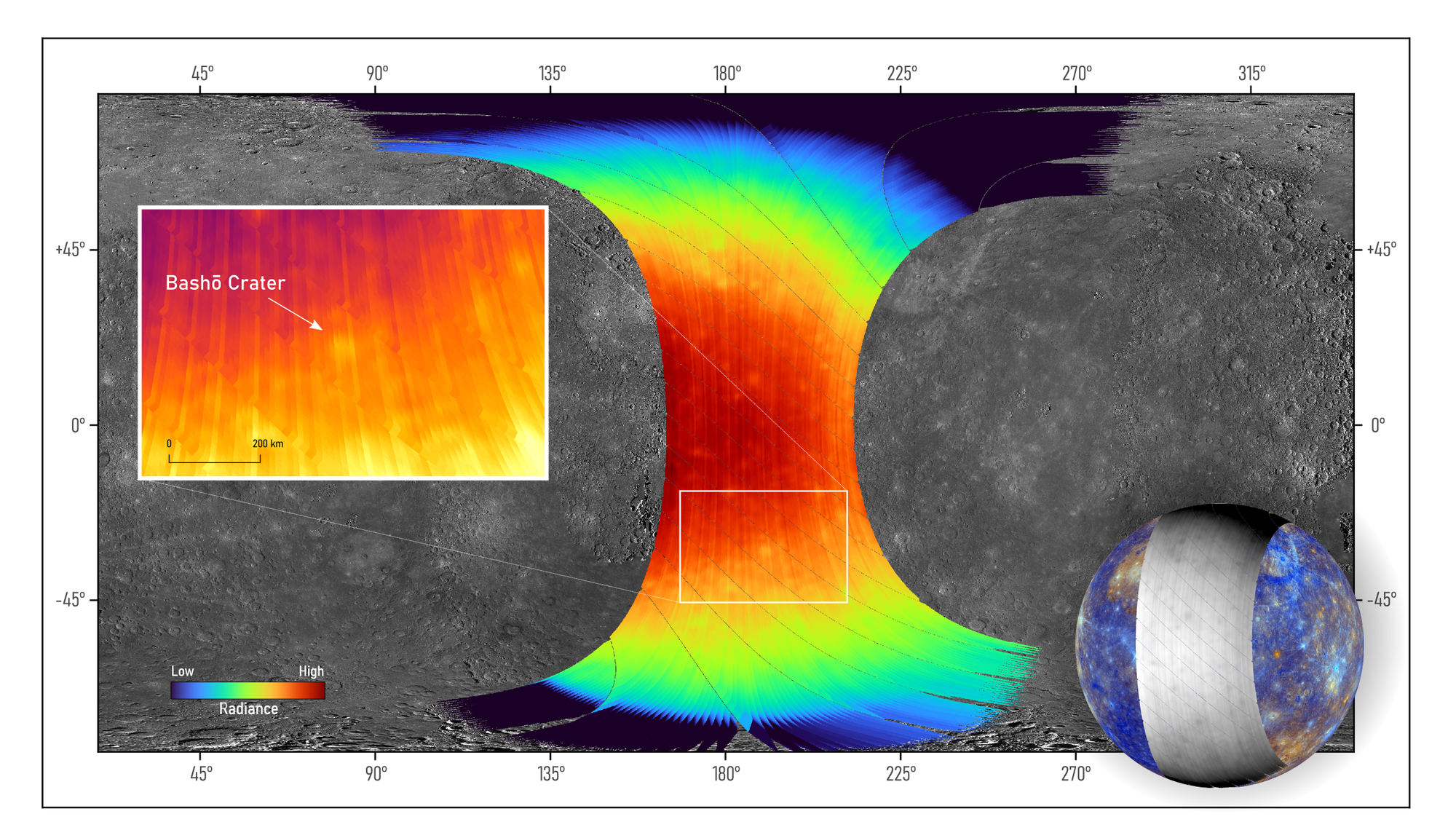BepiColombo's first images of Mercury in thermal infrared
BepiColombo's first images of Mercury in thermal infrared
On 1 December 2024, the BepiColombo spacecraft, on its way to orbit Mercury, completed its fifth flyby of the innermost planet in the Solar System. During the flyby, the MERTIS spectrometer was pointed at Mercury for the first time. The data shown here from one channel (8.45 micrometres) is displayed as a colour gradient (no transparency), projected onto the cartographic mosaic from NASA's MESSENGER orbiter (2011-2015). The colours represent radiation intensity, influenced by surface temperature, surface roughness, mineral composition and thermal properties. The gaps on the map are due to the MERTIS calibration cycle. The Caloris Basin, the largest impact structure on Mercury, is partially observed (red). The zoomed in area (left) shows a close-up of the region centred on the Bashō impact crater. MESSENGER images revealed that the Bashō crater consists of both very dark and very bright material. The MERTIS flyby observations here show an anomaly in the mid-infrared (thermal) radiation intensity, confirming the special characteristics of the crater. The view of the flyby is projected onto a global Mercury map (lower right).

